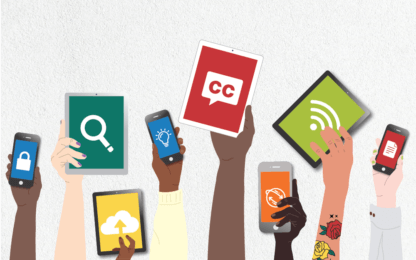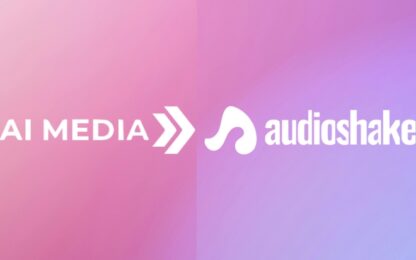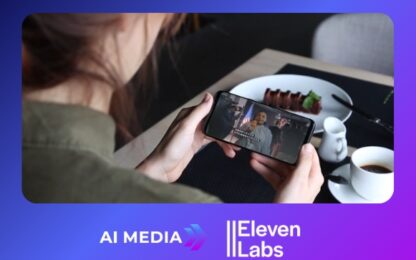
Closed Captioning: A Guide by Ai-Media – Part 1
Closed Captioning: A Guide by Ai-Media – Part 1
Around the world, we are seeing the production of more and more content that includes closed captions.
You might be familiar with the term, and you most certainly would have seen the CC symbol before, but do you know what closed captioning is and how it works?
Welcome to Part 1 of our complete guide to closed captioning! Let’s discuss the basics.
What is Closed Captioning?
Put simply, closed captioning is the written depiction of what is heard and being said in a video or live stream. Closed captions are displayed as lines of text on the bottom of your screen that can be read alongside the vision, as it happens.
Words are synchronised to match the action in real time, allowing the viewer to follow along and comprehend everything with no sound.
Captions mainly consist of dialogue, a written alternative to the spoken word. But they also include everything else within the audio, descriptive text for background noises, song lyrics and even the tone in which words are said.
What are Closed Captions Used For?
For some time, captions were used only for people who are d/Deaf and hard-of-hearing to access video content, but they have become a lot more than that in our extremely-online world.
In addition to improving accessibility for people with various disabilities, captions boost audience engagement on a broad scale, as well as improving user satisfaction, and providing flexibility for audiences to watch or engage with content in very loud or very quiet environments.
Captions can be added to content on a multitude of platforms in many different settings. You can add captions to your video meetings on platforms like Zoom and MS Teams, as well as online events, live streams, any recorded video, and almost anything else you can think of!
The Power of Captions
One great example of the power of captions is scrolling through social media with the volume off.
If you are not listening to the audio on your device, but captions are on, you can still fully understand what is taking place. Facebook has shared that 85 per cent of videos on the platform are watched without sound, and, by adding captions, people spend an average of 12 per cent more time watching videos on the platform.
Captions are also excellent for promoting inclusion and engagement in the workplace and at events by breaking down barriers. Meetings, conference calls, company videos and training can easily be made more accessible and successful with captions, and many more businesses than ever are taking advantage of this tool.
Universities and education institutions use captioning to provide critical access and full participation for d/Deaf and hard-of-hearing students. But all students can benefit and improve their notetaking, literacy, revision and day-to-day study habits.
How to Get Closed Captions Added to Your Content
You’re in luck!
Ai-Media is a captioning, transcription and translation company, operating across the world!
We provide captioning services for any content you can think of, whether that be online work or social meetings, school or university classes, online or in-person events, recorded videos, broadcast media, live streams or personal appointments.
Just get in touch to speak to our friendly team and order on of our many services!
You can read part two of our closed captioning guide here.


